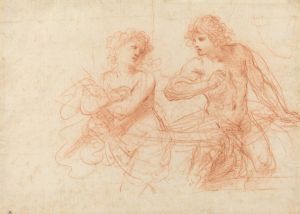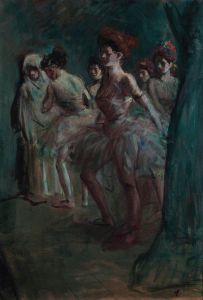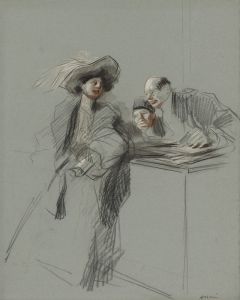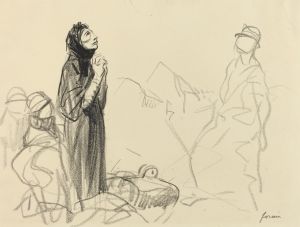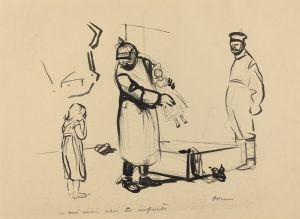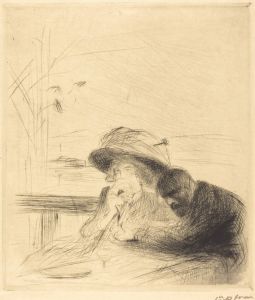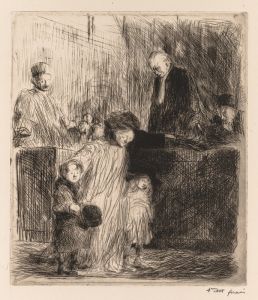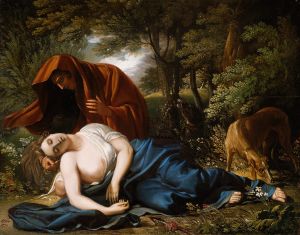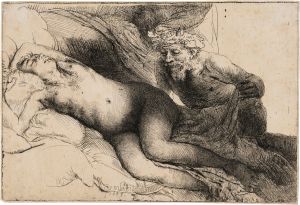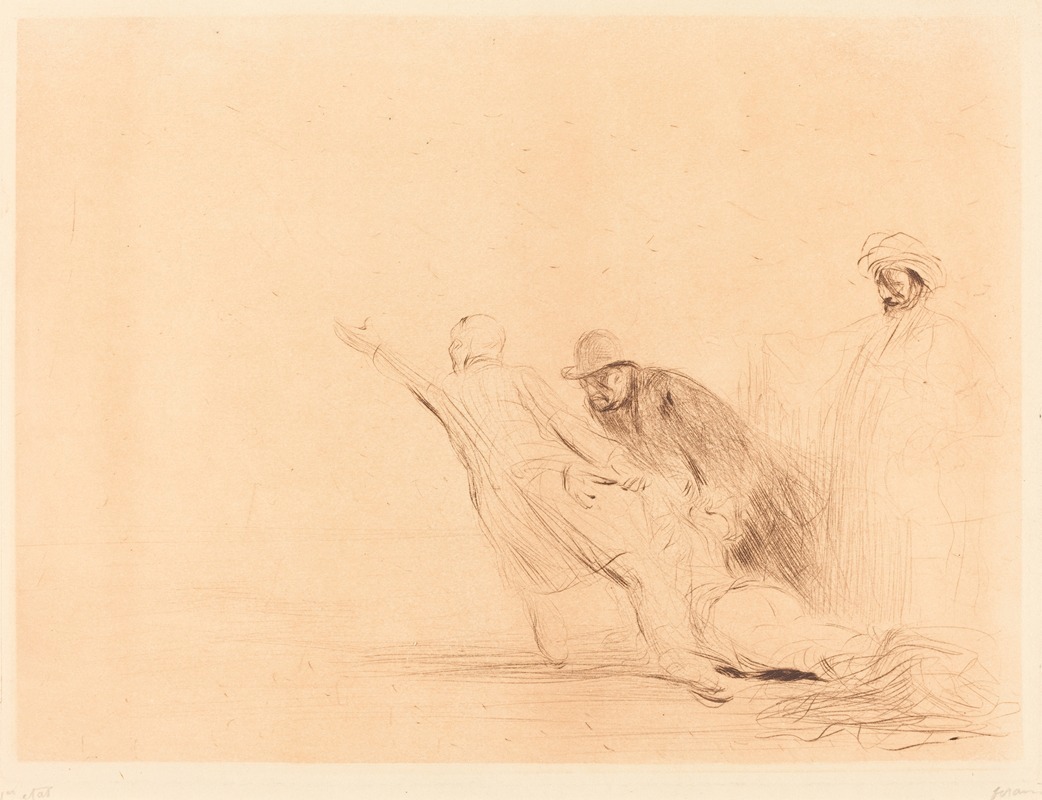
The Adulteress
A hand-painted replica of Jean-Louis Forain’s masterpiece The Adulteress, meticulously crafted by professional artists to capture the true essence of the original. Each piece is created with museum-quality canvas and rare mineral pigments, carefully painted by experienced artists with delicate brushstrokes and rich, layered colors to perfectly recreate the texture of the original artwork. Unlike machine-printed reproductions, this hand-painted version brings the painting to life, infused with the artist’s emotions and skill in every stroke. Whether for personal collection or home decoration, it instantly elevates the artistic atmosphere of any space.
Jean-Louis Forain was a French Impressionist painter and printmaker, known for his depictions of Parisian life in the late 19th and early 20th centuries. One of his notable works is "The Adulteress," a painting that captures the social dynamics and moral complexities of the time. Forain, who was influenced by his contemporaries such as Edgar Degas, often explored themes of modernity, urban life, and the human condition, and "The Adulteress" is a reflection of these interests.
"The Adulteress" is characterized by Forain's typical style, which combines elements of Impressionism with a more realist approach. His use of light and shadow, as well as his keen observation of human behavior, allows him to convey the emotional depth and societal implications of the scene. The painting depicts a woman, presumably the titular adulteress, in a moment of introspection or confrontation. The setting and the figures surrounding her suggest a narrative of social judgment and personal turmoil, common themes in Forain's work.
Forain's choice of subject matter in "The Adulteress" reflects the broader cultural and social issues of the Belle Époque period in France. This era was marked by significant changes in social norms, including attitudes towards marriage, fidelity, and women's roles in society. By focusing on an adulteress, Forain delves into the complexities of personal relationships and the often harsh judgments imposed by society. His work invites viewers to consider the nuances of morality and the impact of societal expectations on individual lives.
The painting also demonstrates Forain's skill in capturing the subtleties of human expression and interaction. His figures are often depicted in candid, unguarded moments, which adds a layer of realism and immediacy to his work. In "The Adulteress," the expressions and body language of the characters convey a sense of tension and introspection, inviting viewers to ponder the underlying story and the emotions at play.
Forain's work, including "The Adulteress," is often compared to that of Edgar Degas, with whom he shared a close friendship and artistic kinship. Both artists were interested in the depiction of contemporary life and often focused on similar themes, such as the complexities of social interactions and the private lives of individuals. However, Forain's work is distinguished by its more overt engagement with social commentary and its exploration of the moral dimensions of everyday life.
"The Adulteress" is a testament to Forain's ability to blend artistic technique with insightful social observation. Through his nuanced portrayal of a morally complex subject, Forain invites viewers to reflect on the nature of judgment, the constraints of societal norms, and the personal struggles that often lie beneath the surface of public life. His work remains a valuable contribution to the understanding of the cultural and social landscape of his time, offering a window into the human experience during a period of significant change and upheaval.






